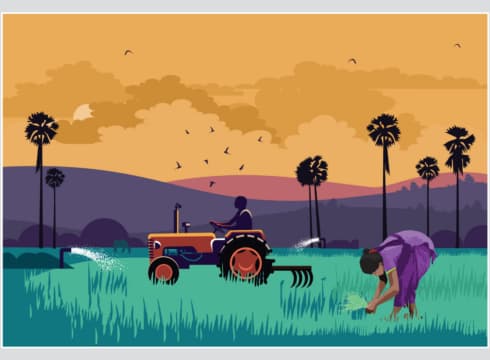Micro-rural industries in India face challenges accessing formal financial services and products, hindering their growth and preventing investment
Peer-to-peer lending provides a solution by democratising access to credit. It promotes mutual empowerment by enabling responsible borrowing and holding borrowers accountable for their growth while enabling investors to create an impact and earn a return on their investment
Digital social innovation (DSI) is a hybrid model that leverages digital technologies to connect low-income borrowers with lenders and combat poverty
Inc42 Daily Brief
Stay Ahead With Daily News & Analysis on India’s Tech & Startup Economy
By definition, the ‘micro-rural industry’ refers to small-scale businesses that operate in rural areas and are typically owned and operated by local residents. These businesses are instrumental in the economic development of rural areas, providing employment opportunities for the community and generating income. A few common examples of micro-rural industries would include agriculture, handicrafts, and small-scale manufacturing, among others.
While the sector has been significantly contributing to India’s growth story, for most of these people, access to formal financial services and products still remains a challenge. According to a report by the Reserve Bank of India, around 22% of Indians do not have a bank account, an aspect that has held the sector back and prevented investments in their businesses.
Moreover, traditional banks and financial institutions have stringent requirements, which makes it difficult for low-income households and small businesses to access loans and other financial services. Not only that, very few financial products have the flexibility to be customised for the community of borrowers they serve. This deficiency in credit accessibility and flexibility is a tough cycle to break, hence the requirement to democratise access to credit, which can be achieved through peer-to-peer (P2P) lending.
Financial Inclusivity With P2P Lending Solutions
Peer-to-peer lending, also known as P2P lending, offers a viable solution to the problem of credit by connecting borrowers directly with investors through an online platform. It eliminates the need for intermediaries such as banks and financial institutions, making the lending process more accessible, efficient and affordable.
According to a Global Findex report 2021, the Jan Dhan Yojana added 450 Mn Indians to the formal banking system. However, the share of account owners with inactive accounts in India is the highest, at 35%. Distance from financial institutions and a lack of trust are some of the main reasons for accounts being inactive. In addition to this, small farmers and rural artisans also face challenges in obtaining debt financing solutions from traditional banks due to their inability to provide collateral, limited credit history, and difficulty meeting high transaction costs.
All of the above leads to the emergence of a parallel system of informal lending that is often exploitative and unsustainable. There have been several instances of money lenders charging interest rates as high as 120-130% annually, a predatory practice that is meant to keep the borrower trapped and unable to repay completely. Additionally, since most small and micro startups fall outside the formal economy, they rely on unregulated sources that charge high-interest rates.
In the background of such developments, alternative financing options become necessary to support these vital segments of the economy. Institutions must re-evaluate their systems and policies to better serve the needs of people experiencing poverty and promote financial inclusion. By providing affordable financing options and democratising credit, micro-rural entrepreneurs, small farmers, artisans, and communities will be able to grow their businesses, generate income, and contribute to the overall development of their economies.
Digital Social Innovation (DSI) Is A Novel & Powerful Concept
Digital social innovation (DSI) is an operating model that relies primarily on digital technologies and focuses on the social aspect of the invention. By establishing a virtual connection between low-income individuals and lenders, these platforms enable the former to access low-interest loans.
It is necessary for prosocial P2P lending platforms to maintain a hybrid, online and offline focus on achieving their mission of combating poverty. Maintaining a high level of engagement with complex issues in the offline world of low-income borrowers contributes to developing the model as a social innovation.
The Way Forward
When it comes to helping individuals, most often we witness support in terms of charity or donation. However, philanthropy, the other alternative to social peer-to-peer lending, is not suited for all social problems as it raises questions about the beneficiary’s ability to be the driver of their success. Through P2P lending, individuals are empowered through responsible borrowing and are held accountable for their growth by repaying the money to their lenders or investors. This helps promote a sense of mutual empowerment, enabling investors to contribute meaningfully to different communities.
This is a much-required innovation that can help India achieve financial inclusion and also enables lenders to create an impact in the life of the borrower while earning a return on their investment.
{{#name}}{{name}}{{/name}}{{^name}}-{{/name}}
{{#description}}{{description}}...{{/description}}{{^description}}-{{/description}}
Note: We at Inc42 take our ethics very seriously. More information about it can be found here.


